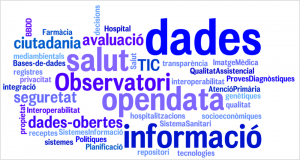
The Economist recently published an article in which they reported that the number of mobile health applications, or apps, was in the region of 165.000, a very high figure that poses many questions.
A large part of these apps are related to well-being and promoting healthy lifestyles, but what makes us choose one over another?
The first thing that comes to mind is that mobile health apps, being a health technology, could and should be assessed based on their impact on health and this is where we are faced with our first problem.
While there is a gold standard when assessing this impact in the area of medication and static interventions in randomized clinical trials, how is this impact assessed in a highly dynamic world? In a world that can include a range of components that users can use depending on their needs? Where pressure is added due to the fact that advances in technology are being made in leaps and bounds and we cannot wait for years before getting results? It is not that simple.
If we venture into the area of mHealth, the first thing we find is great diversity. The design, requirements and assessment of an app developed to help manage diabetes in older people is very different to an app aimed at providing a dose for some medication where improving its adherence is sought, or an app to promote not drinking alcohol among young people before sitting in the driver’s seat, or an app to manage depression and anxiety.
What are we trying to say with all this? Easy and complex at the same time: the intervention that one wants to do via a health app and the target users will determine their use and their adherence.
And we are only just beginning. Apart from aspects related to health and the suitability of content or other more technological factors such as interoperability and security -by no means simple-, other factors come onto the scene such as acceptability, usability and satisfaction, factors related to User Experience (UX).
User Experience in mHealth is essential given that the main aim of it all is to make the tools which are being developed viable, accepted and used by the population who they are meant for, and also that the aim for which they were designed be respected.
After all, the end user who has the last word in deciding whether a health app is used or not, and this is why their participation in all phases of developing these mHealth tools is crucial.
Pursuing these aims of feasibility, acceptability and usability can make us reflect on, for example, the difficulty some old-age people may have when learning to use a smartphone for the first time. However, these obstacles related to the generational factor also exist among young people with new languages.
We suggest let yourself surprised by this video that shows how some adolescents react and interact when using Windows 95 for the first time.
The Mobile World Congress 2017 will be taking place in Barcelona next week. Monday will be one of the days circled into the diary of many professionals interested in subjects on mobiles and health with the Digital Health & Welness Summit 2017 programme.
But not everything will be happening at the Mobile. Another important mHealth event will take place on March 1st at the Palau Robert in Barcelona with the DECIPHER project final event.
Post written by Elisa Puigdomènech and Marta Millaret (@martamillaret).



 The information generated by the interaction of citizens and the healthcare system keeps increasing in size. Just to get an idea, last year, only in Catalonia there were nearly 45 million consultations in primary care centres, more than 700.000 patients were hospitalised, and over 150 million prescriptions were made. However, there is much more stored in administrative records (diagnostic tests, medical imaging, hospital prescriptions, expenditures, etc.) which are kept and managed in large databases. Government officials are responsible for the safe keeping of this information, and it may use it to improve the quality of healthcare and for healthcare planning purposes.
The information generated by the interaction of citizens and the healthcare system keeps increasing in size. Just to get an idea, last year, only in Catalonia there were nearly 45 million consultations in primary care centres, more than 700.000 patients were hospitalised, and over 150 million prescriptions were made. However, there is much more stored in administrative records (diagnostic tests, medical imaging, hospital prescriptions, expenditures, etc.) which are kept and managed in large databases. Government officials are responsible for the safe keeping of this information, and it may use it to improve the quality of healthcare and for healthcare planning purposes.
